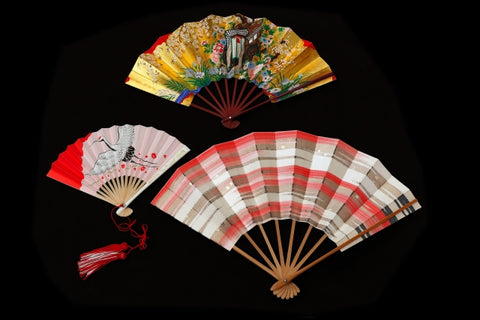As autumn approaches, information about Shichi-Go-San festivals can be seen here .
Shichi-Go-San is an event to pray for the growth of children, but do you know its meaning?
Today, I would like to introduce the meaning of the accessories that are almost essential for Shichi-Go-San and the origin of Chitose candy.

Shichi-Go-San is November 15th . It originates from the Tokugawa Shogun's wish for good health for his child.
Many people think of Shichi-Go-San as an autumn event, but the official date is November 15th .
November 15th , 2022 will be a weekday, but many people will probably go to shrines and photo studios on the Saturdays and Sundays before and after that.
There are various theories as to why Shichi-Go-San was celebrated on November 15th , but the most famous theory is that it has something to do with the Tokugawa Shogun .
It seems that Tokugawa Tsunayoshi, the fifth general of the Edo Shogunate, famous for the ``Ordinance of Mercy for Living Animals,'' and his son Tokumatsu were very physically weak children. In the past, food and hygiene were not as good as they are now, so it was probably difficult for babies to grow up safely.
Tsunayoshi prayed for good health on November 15th so that his child would grow up healthy, and it is said that Tokumatsu grew up safely until he was 5 years old.
It is said that this episode triggered the birth of Shichi-Go-San, a festival to pray for the healthy growth of children.

Protect yourself! What is the meaning of Shichi-Go-San accessories that incorporate parents' feelings into accessories?
At Shichi-Go-San, in addition to the kimono, certain accessories are also displayed.
It seems that each accessory has a meaning or a parent's wish, so I would like to introduce them to you.
- Cloth ( hifu )
It is a vest-like item worn by 3-year-old girls over their daily wear , and was originally worn as winter clothing.
When my everyday clothes were kimonos, I wore a simple kimono with strings sewn into it until I was 7 years old. Parents say that ``wearing a obi puts a burden on the child, but they want to let the child wear a gorgeous costume on a celebratory day,'' which is why parents started wearing the colorful overcoat.
-
Kaiken _
It's a small sword in a bag that a 5- year-old boy wears on his hakama.
The Kaiken was originally carried by samurai women for self-defense, but it is an accessory that symbolizes the love and desire of a woman to become strong enough to protect herself .
-
Hakoseko _

It is an accessory case-shaped decoration that a 7-year-old girl puts on her collar. The 7th birthday celebration also has the meaning of ``the first step from a girl to a woman''.
The hakosako is designed to store small items, and since there are things like amulets, lipstick, and hairpins inside, it functions like a makeup pouch.
It is said that it originated in the makeup pouches that women of the samurai families used to carry things like mirrors, lipstick, and incense. I carry it with me as a first step towards adulthood.
- Sensu (sensu)

Accessories used by 7 year old girls.
It is used as a lucky charm, as it is said that good things will happen to you as it spreads out.
Rather than simple items for everyday use, the unique features of Shichi-Go-San fans are their gorgeous patterns and colors.
In addition, hair ornaments, hair ornaments, hair ornaments, etc. each have their own meanings, so you can have fun knowing them and celebrating Shichi-Go-San!

Everyone loves Chitose candy. In fact, the length is determined to be 1 meter.
Chitose candy is delicious!
Some children may think of dressing up and taking photos for Shichi-Go-San as candy they receive as a reward for their hard work.
Candy can be rolled out long and thin. In fact , there is a regulation for Chitose candy to be within 1 meter in length and 15 mm in thickness , but since the candy can stretch forever, it is said to be associated with longevity and was widely used as a lucky charm.
Chitose Ame is a symbol of parents' wishes for their children to grow up to be ``long and thin'' and ``persistent'' like candy.
There are various theories about the origin of Chitose candy.
-
Asakusa origin theory
The theory is that during the Edo period, Shichibei, a candy seller at Sensoji Temple, sold red and white candy sticks that he named ``Sennen Ame''.
It is said that the name ``Millennium'' became a hot topic and spread because of the image of blessings such as ``living a long life'' and ``staying healthy .''
-
Osaka origin theory
It is said that the story began when Jinzaemon Hirano of Osaka began selling candy in the precincts of Edo.
This candy was written as "Chitose Ame," but its pronunciation is " Senzai Ame ." It is said that if you eat the candy, you can live all the way to Chitose, so it gained popularity and spread.
Later, the pronunciation changed to `` Senzaiame → Chitoseame, '' and it is said that this is still the case today.
Furthermore, the bag containing Chitose candy has a gorgeous design with lucky charms such as ``Shochikubai'' and ``Tsurugame'' written on it.
There are multiple theories about its origin, but both of them mean ``living a long life'' and ``hoping for growth'' and are must-have items for Shichi-Go-San.
How was it.
If you know the origin and meaning of Shichi-Go-San, accessories, and Chitose candy, you will appreciate it even more. I hope you have a wonderful anniversary, a once in a lifetime event.
Reference URL
・Japanese weather
https://haa.athuman.com/media/japanese/tag/%E4%B8%83%E4%BA%94%E4%B8%89/
・photo efy
https://www.hi753.com/blog/136/
・happy Photo Studio

